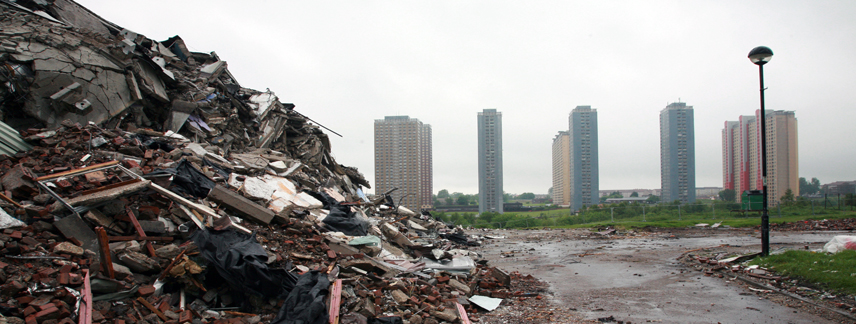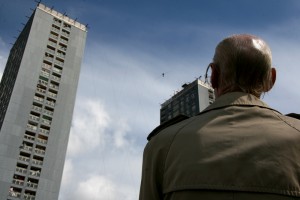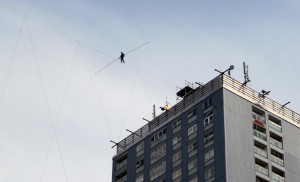The 2000s
Glasgow Housing Association
The Red Road Flats changed dramatically in 2003 when the flats were transferred to the newly created Glasgow Housing Association. This change amounted to the largest transfer of public-sector housing stock that had ever taken place in Western Europe. Soon the new landlords as well as the council insisted that repairs were costing more than receipts in rent, and that big changes therefore had to be made. In 2005 Glasgow Housing Association announced its intention to demolish one of the tallest blocks as part of a regeneration plan for the area. Regeneration is well underway with new housing developments and the demolition process of the flats ongoing.
High Wire
On Sunday, 22nd of July 2007, French high wire artist Didier Pasquette attempted to cross the 150-foot gap between two tower blocks of the Red Road Flats. This was intended to be the first of two sections in a dramatic spectacle performed to about 2,000 onlookers who turned up for the event - an event which had been postponed from the previous day due to bad weather. Unfortunately this attempt was also cancelled because of high winds which whipped round the assembled crowd and which must have affected Didier that bit more in his exposed position about 300 feet above the ground - no safety net, no safety lines. He did walk out to about 30 plus feet, then he returned, walking backwards, viewed by a silent, anticipatory audience. But he didn’t fall off.
- View a 360 Panoramic View of High Wire . . .
![]()
Community Arts Projects
Throughout the 2000s and to the present day, a number of visual arts groups have been running long- and short-term community arts projects in the Red Road Flats. Details of these organisations and the projects they ran / are running can be viewed by visiting the Red Road Events page.





